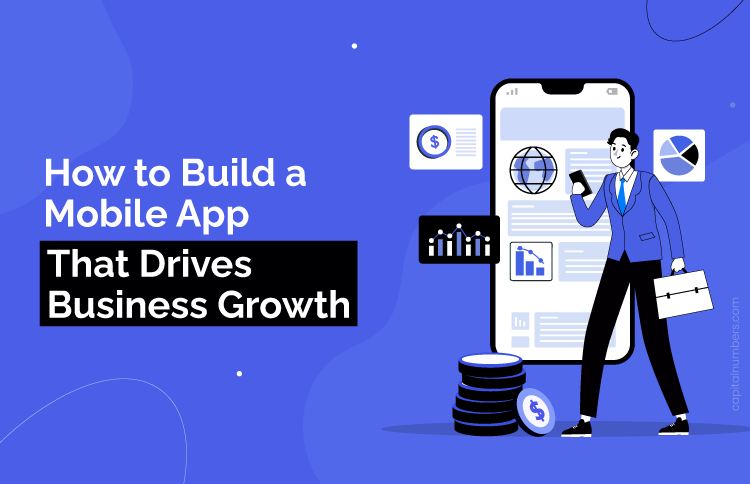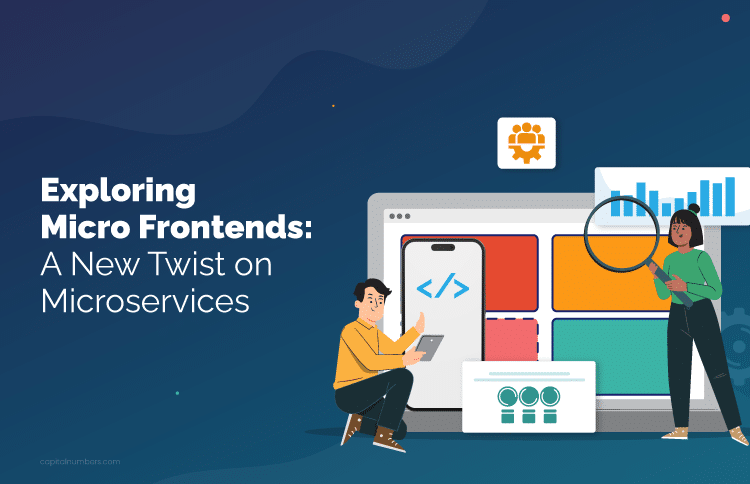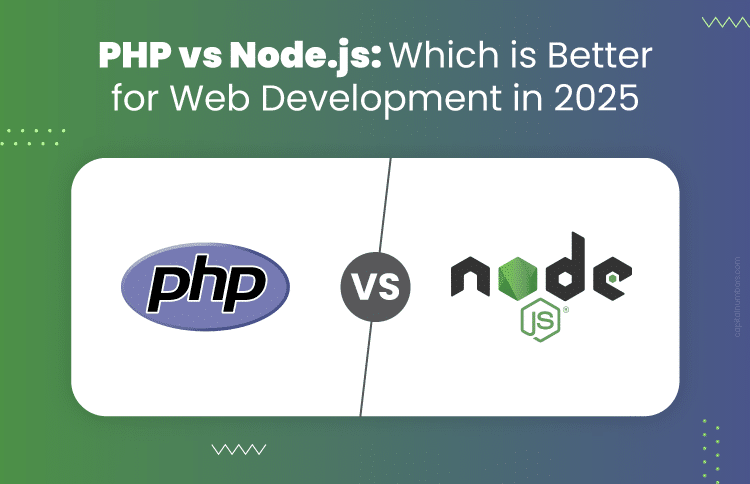How to Build a Mobile App That Drives Business Growth
Table of Contents
In today’s digitally-driven world, mobile apps have become essential for business growth. Consumers increasingly rely on their smartphones for everything from shopping and banking to entertainment and social interaction. This shift in consumer behavior has created a compelling opportunity for businesses to reach and engage their target audience in a more direct and personalized way. With billions of people owning smartphones, businesses that fail to leverage mobile apps risk falling behind competitors and losing out on potential customers.
This blog serves as a comprehensive guide for businesses looking to build a mobile app to drive their business growth. It will cover various aspects of the app development process, from initial planning and design to launch and post-launch strategies. The blog will provide practical advice and best practices to help businesses make informed decisions and achieve their mobile app goals.
How Can a Mobile App Contribute to Business Growth?
A mobile app can significantly contribute to business growth in various ways. Some of the key contributions include:
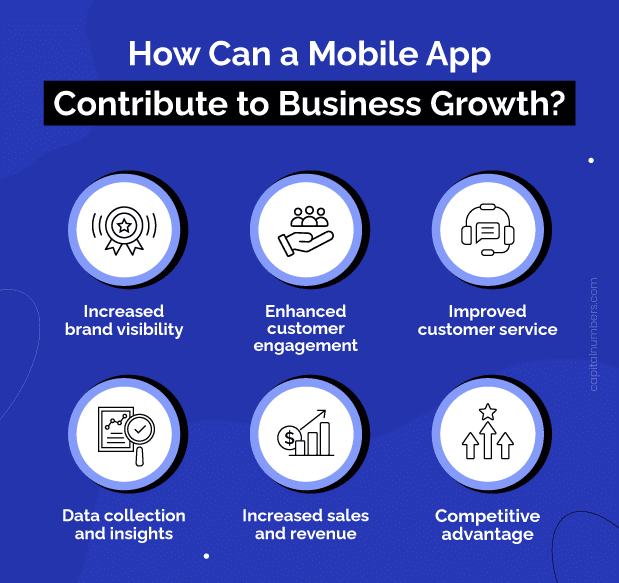
- Enhanced customer engagement: Mobile apps provide a direct channel for businesses to interact with customers, offering personalized experiences, push notifications, and loyalty programs.
- Increased brand visibility: A well-designed app can boost brand awareness and recognition, positioning the business as innovative and customer-centric.
- Improved customer service: Mobile apps can streamline customer support by providing self-service options, live chat, and in-app support.
- Data collection and insights: Apps can gather valuable data about user behavior, preferences, and demographics, enabling businesses to make data-driven decisions.
- Increased sales and revenue: Mobile apps can drive sales by offering exclusive promotions, in-app purchases, and convenient checkout options.
- Competitive advantage: By being at the forefront of mobile technology, businesses can differentiate themselves from competitors and gain a first-mover advantage.
Understanding the Business Need for Mobile App Development
- Identifying Business Goals and Objectives: Before diving into mobile app development, it’s crucial to clearly define your business’s overall goals and objectives. What do you hope to achieve with your app? Are you aiming to increase sales, improve customer engagement, enhance brand awareness, or streamline internal processes? Clearly articulating your business objectives will guide the app development process and ensure it aligns with your broader business strategy.
- Defining the Target Audience: Understanding your target audience is essential for creating a successful app. Who are you trying to reach with your mobile app? Consider factors such as age, demographics, interests, and behaviors. Creating detailed user personas can help you better understand your target audience and tailor the app to their specific needs and preferences.
- Conducting Market Research and Competitor Analysis: Thorough market research is vital to identify opportunities and challenges in the app market. Analyze your industry, identify your target audience’s needs and preferences, and assess the competitive landscape. Understanding what your competitors are doing can help you differentiate your app and offer unique value to your users.
- Creating a Clear Value Proposition: A strong value proposition clearly communicates the unique benefits your app offers to users. What problem does your app solve? How does it improve users’ lives? Clearly articulating your app’s value proposition will help you focus on developing features that directly address user needs and drive app adoption.
Planning and Strategy for Mobile App Development
- Defining the App’s Core Features and Functionalities: Once you have a clear understanding of your business goals and target audience, it’s time to outline the core features and functionalities of your app. This involves creating a detailed feature list that aligns with your business objectives and addresses the needs of your target users. Prioritize features based on their importance and impact on the user experience.
- Creating a Detailed Project Plan: A well-structured project plan is essential for keeping your app development on track. This plan should outline the project scope, timeline, milestones, and deliverables. It should also identify the roles and responsibilities of team members, as well as communication and decision-making processes.
- Setting a Budget and Timeline: Establishing a realistic budget and timeline is crucial for managing expectations and allocating resources effectively. Consider factors such as the app’s complexity, development team size, and desired launch date when setting your budget and timeline.
- Building a Development Team or Outsourcing: Depending on your in-house resources and project requirements, you may need to assemble a development team or outsource the project. Consider the skills and expertise required for your app, and choose the option that best fits your budget and timeline.
- Choosing the Right Platform (iOS, Android, or Both): Deciding which platform(s) to target depends on your target audience and business goals. Consider factors such as market share, user demographics, and development costs when making your decision. You can also opt for a hybrid or cross-platform approach to reach a wider audience with a single codebase.
By carefully planning and strategizing your mobile app development project, you can increase your chances of success and deliver an app that meets your business objectives.
Grow your business with our mobile app development services! Build a custom app to reach your audience, simplify operations, and boost growth.
Design and User Experience (UX) for Mobile App Development
- Creating Wireframes and Prototypes: Wireframes are basic sketches or blueprints of the app’s interface, outlining the layout and structure of screens. Prototypes, on the other hand, are interactive mockups that simulate the app’s functionality. These design artifacts help visualize the app’s flow, identify potential usability issues, and gather feedback from stakeholders.
- Designing Intuitive and User-Friendly Interfaces: A well-designed interface is crucial for a positive user experience. The app’s layout, visual elements, and navigation should be intuitive and easy to understand. Consistent use of design patterns and clear labeling will help users navigate the app effortlessly.
- Ensuring a Seamless User Experience Across Devices: With the proliferation of smartphones and tablets, it’s essential to design apps that work seamlessly across different devices and screen sizes. Responsive design and adaptive layouts can help create a consistent user experience regardless of the device being used.
By prioritizing user experience and creating a visually appealing and intuitive app, you can significantly enhance user satisfaction and drive app adoption.
Development Process for Mobile App Development
- Choosing the Right Development Methodology:Selecting the appropriate development methodology is crucial for efficient and effective app development. Popular options include:
- Agile: Emphasizes iterative development, flexibility, and collaboration.
- Waterfall: Follows a linear sequential process with distinct phases.
- Hybrid: Combines elements of Agile and Waterfall to balance flexibility and structure.
The choice of development methodology depends on project size, complexity, team dynamics, and client preferences.
- Selecting Appropriate Programming Languages and Tools:The technology stack used for development will depend on the platform (iOS, Android, or both) and the app’s features. Common programming languages include:
- iOS: Swift, Objective-C
- Android: Java, Kotlin
- Cross-platform: React Native, Flutter
Additionally, developers will utilize various tools for coding, debugging, testing, and version control.
- Building the App’s Backend Infrastructure:The backend infrastructure supports the app’s functionality and data management. This includes:
- Database: Storing app data (e.g., SQLite, MySQL, MongoDB)
- Backend Programming: Hosting the app’s logic and API (e.g., Node.js, Python, Laravel)
- Cloud services: Providing additional features like storage, authentication, and push notifications (e.g., AWS, Google Cloud Platform, Azure)
- Integrating APIs and Third-Party Services:To enhance app functionality, developers often integrate APIs from third-party services. This can include:
- Payment gateways: For processing in-app purchases
- Social media platforms: For user login and sharing
- Mapping services: For location-based features
- Analytics tools: For tracking user behavior
- Testing and Debugging the App:Rigorous testing is essential to ensure app quality, performance, and security. This involves:
- Unit testing: Testing individual components of the app
- Integration testing: Testing how different components work together
- UI/UX testing: Evaluating the app’s usability and user experience
- Performance testing: Assessing app speed and responsiveness
- Security testing: Identifying and addressing vulnerabilities
By following a structured development process and employing rigorous testing, you can create a high-quality mobile app that meets user expectations.
Understanding the Importance of ASO
App Store Optimization (ASO) is the process of optimizing your app’s visibility and discoverability within app stores like the Apple App Store and Google Play Store. By implementing effective ASO strategies, you can increase organic downloads, improve app rankings, and boost overall app performance.
- Keyword Research and Optimization: Keyword research is fundamental to ASO success. By identifying relevant keywords and phrases that your target audience is likely to search for, you can optimize your app’s metadata to rank higher in search results. Incorporate these keywords strategically into your app’s title, subtitle, description, and keywords field (where applicable).
- Creating Compelling App Store Listings: Your app’s store listing is its first impression on potential users. Craft a compelling and informative app description that highlights key features, benefits, and target audience. Use clear and concise language, and include relevant keywords without overstuffing.
- Building a Strong App Icon and Screenshots: A visually appealing app icon and high-quality screenshots are essential for capturing users’ attention. Your icon should be distinctive and representative of your app, while screenshots should showcase the app’s key features and user interface.
- Leveraging User Reviews and Ratings: Positive user reviews and high ratings can significantly impact your app’s visibility and conversion rates. Encourage satisfied users to leave reviews, and respond promptly to both positive and negative feedback. Address negative reviews constructively to demonstrate your commitment to customer satisfaction.
By implementing a comprehensive ASO strategy, you can increase your app’s visibility, attract more downloads, and build a loyal user base.
How Can You Effectively Launch and Market Your Mobile App?
Launching and marketing your mobile app requires a comprehensive approach, starting with developing a launch strategy that builds anticipation and creates buzz. By utilizing social media and other marketing channels, implementing a PR campaign, and offering incentives and promotions, you can effectively reach your target audience and drive app downloads.
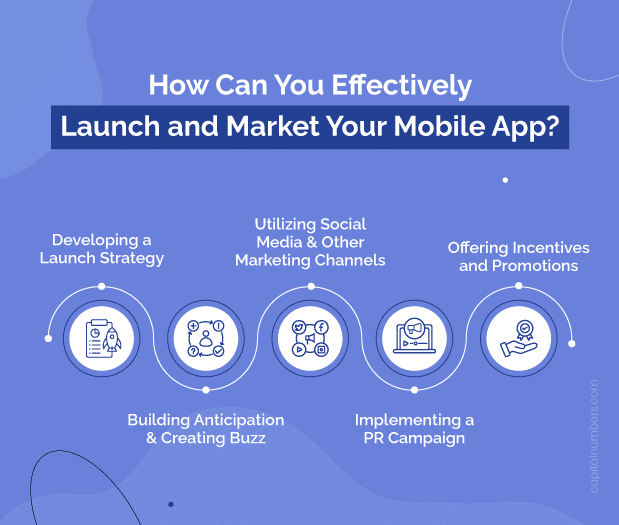
- Developing a Launch Strategy:A well-crafted launch strategy is essential for generating initial buzz and driving downloads. Key elements of a launch strategy include:
- Setting a launch date: Choose a date that aligns with your target audience’s preferences and avoids conflicts with major events.
- Identifying key performance indicators (KPIs): Determine the metrics you will use to measure the success of your launch (e.g., downloads, user retention, revenue).
- Creating a pre-launch campaign: Build anticipation and generate interest by teasing the app’s features and benefits through social media, email marketing, and other channels.
- Building Anticipation and Creating Buzz:To maximize the impact of your launch, create a sense of excitement and anticipation among your target audience. This can be achieved through:
- Leveraging social media: Share behind-the-scenes content, teasers, and countdown posts to build excitement.
- Influencer partnerships: Collaborate with influencers in your industry to promote the app to their followers.
- Press releases: Generate media coverage by distributing compelling press releases about the app’s unique features and benefits.
- Utilizing Social Media and Other Marketing Channels:Social media platforms offer a powerful way to reach and engage with your target audience. Develop a comprehensive social media marketing strategy that includes:
- Platform selection: Choose the platforms that best align with your target audience (e.g., LinkedIn, Instagram, Facebook, Twitter).
- Content creation: Create engaging content that highlights the app’s benefits and encourages sharing.
- Paid advertising: Utilize social media advertising to reach a wider audience and target specific demographics.
- Influencer marketing: Partner with influencers to promote your app to their followers.
- Email marketing: Build an email list and send targeted campaigns to nurture leads and drive app downloads.
- Implementing a PR Campaign:Public relations can help generate media coverage and build brand awareness. Key PR activities include:
- Pitching media outlets: Identify relevant journalists and media outlets and pitch your app’s story.
- Press releases: Develop compelling press releases to announce the app’s launch and share updates.
- Media outreach: Build relationships with journalists and influencers to secure media coverage.
- Offering Incentives and Promotions:Incentives and promotions can encourage app downloads and drive user engagement. Consider offering:
- Limited-time discounts: Create a sense of urgency and encourage immediate downloads.
- In-app rewards: Offer exclusive rewards or bonuses to early adopters.
- Referral programs: Incentivize users to share the app with friends and family.
- Contests and giveaways: Generate excitement and engagement by running contests or giveaways.
By combining these strategies, you can create a successful app launch and drive long-term growth.
Post-Launch Growth and Optimization for Your Mobile App
- Monitoring App Performance and User Analytics:Tracking key performance indicators (KPIs) is essential for understanding how your app is performing. This involves:
- User acquisition: Monitoring the number of downloads and installs.
- User engagement: Tracking active users, session length, and screen views
- Retention: Measuring user retention rates over time.
- Monetization: Analyzing revenue generated from in-app purchases, advertising, or subscriptions.
By closely monitoring these metrics, you can identify areas for improvement and make data-driven decisions.
- Gathering User Feedback and Implementing Improvements:User feedback is invaluable for enhancing the app experience. This involves:
- App store reviews: Monitoring and responding to user reviews and ratings.
- In-app feedback: Incorporating feedback mechanisms within the app (e.g., surveys, ratings).
- User interviews and surveys: Conducting in-depth interviews or surveys to gather detailed feedback.
- A/B testing: Experimenting with different app features or designs to optimize user experience.
By actively seeking and incorporating user feedback, you can improve user satisfaction and drive app retention.
- Implementing Updates and New Features:Continuously updating your app with new features and improvements is crucial for staying competitive and meeting user expectations. This involves:
- Feature roadmap: Developing a roadmap for future updates based on user feedback and market trends.
- Iterative development: Releasing updates in stages to gather user feedback and make refinements.
- Bug fixes: Addressing reported bugs and performance issues promptly.
By staying committed to app updates, you can demonstrate your dedication to users and encourage continued engagement.
- Building a Loyal User Base:Cultivating a loyal user base is essential for long-term app success. This involves:
- Building a community: Fostering a sense of community among users through social media, forums, or in-app features.
- Loyalty programs: Implementing rewards programs or loyalty points to incentivize repeat usage.
- Personalized experiences: Tailoring the app experience to individual users based on their preferences and behavior.
By nurturing a loyal user base, you can increase app retention, generate positive word-of-mouth, and drive organic growth.
- Monetization Strategies:Choosing the right monetization strategy is crucial for generating revenue. Common monetization models include:
- In-app purchases: Offering virtual goods, premium features, or subscriptions for purchase.
- Advertising: Displaying ads within the app (e.g., banner ads, interstitial ads, rewarded video ads).
- Freemium model: Offering a basic version of the app for free and charging for premium features or content.
- Subscription model: Providing access to exclusive content or features for a recurring fee.
Carefully consider your target audience and app’s value proposition when selecting a monetization strategy.
By focusing on post-launch growth and optimization, you can maximize the potential of your mobile app and achieve long-term success.
Challenges and Best Practices for Mobile App Development
- Common Challenges in Mobile App Development:Developing a successful mobile app is often fraught with challenges. Some common hurdles include:
- Platform fragmentation: Ensuring compatibility across different operating systems, devices, and screen sizes.
- Performance optimization: Balancing app functionality with battery life and device performance.
- Security: Protecting user data and preventing vulnerabilities.
- User acquisition and retention: Attracting and retaining users in a competitive market.
- Monetization: Finding effective ways to generate revenue.
- Rapidly changing technology: Keeping up with the latest trends and advancements.
- Best Practices for Successful App Development:Adhering to best practices can significantly improve the chances of app success:
- User-centric design: Prioritize user needs and preferences throughout the development process.
- Clear project scope and timeline: Define project goals and establish realistic deadlines.
- Effective project management: Utilize appropriate methodologies (Agile, Waterfall, etc.) to manage the development process.
- Rigorous testing: Conduct thorough testing to identify and fix bugs before launch.
- Continuous improvement: Gather user feedback and iterate on the app based on insights.
- App Store Optimization (ASO): Optimize app metadata and keywords for better discoverability.
- Marketing and promotion: Develop a comprehensive marketing strategy to reach your target audience.
- Data analytics: Track key performance indicators to measure app success and make data-driven decisions.
You May Also Read: A Guide to Building a Mobile App Using Flutter and WordPress
Conclusion
Building a mobile app that drives business growth requires a strategic and comprehensive approach. From identifying your target market and defining your app’s unique value proposition to development, launch, and ongoing optimization, each step is crucial. By effectively leveraging mobile technology, you can create an app that not only attracts and engages users but also directly contributes to your business growth. Remember, a successful mobile app is more than just a digital product; it’s a powerful tool for achieving your business objectives and outpacing competitors.
Want to grow your business with an app? We can help you build one that people love. Let’s talk!

